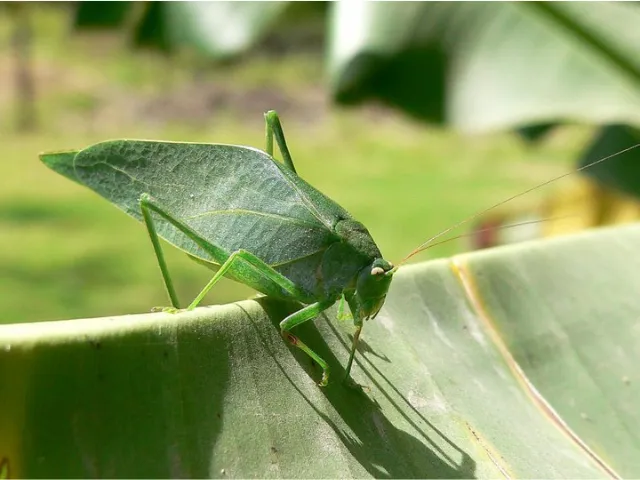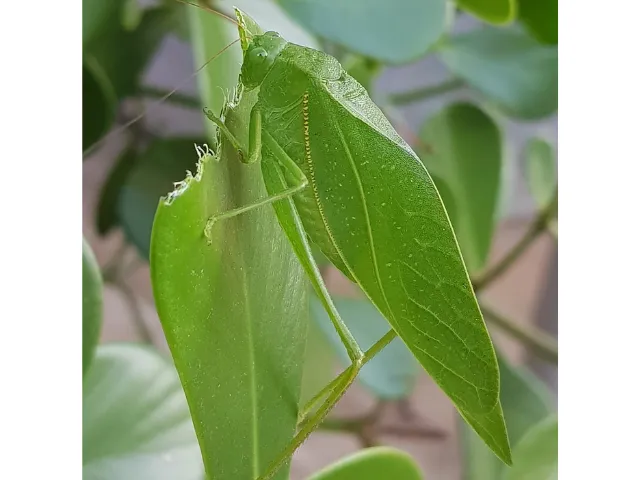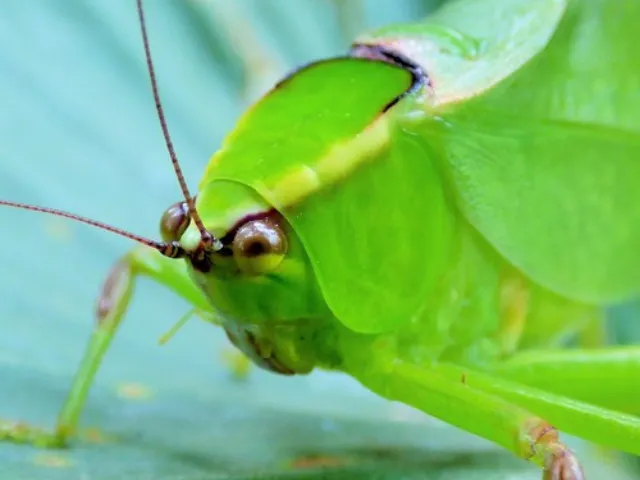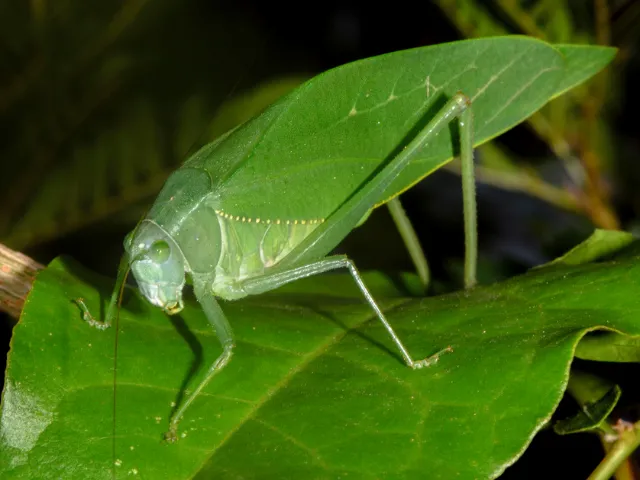Welcome to all those who love the insect world.
Bienvenidos todos los que aman el Mundo de los Insectos
Hello everyone, today I make my first publication for this wonderful community of lovers of the insect kingdom, and I hope you like these pictures of this incredible incest. Today I was encouraged to participate in the great initiative of my friend @adalger in the Insects of the World Contest
Hola a todos, el día de hoy hago mi primera publicación para esta maravillosa comunidad de amantes del reino de los insectos, y espero que les gusten estas fotografías de este increíble incesto. Hoy me he animado a participar en la grandiosa iniciativa del amigo @adalger en el Concurso de Insects Of The World

Photo source: https://gallery.new-ecopsychology.org/es/photo/giant_katydid_(stilpnochlora_couloniana)2.htm

Phasmatodea son muy conocidos como insectos palo o insectos hoja en algunos países del mundo. Se caracterizan porque son de formas planas, ancho, , con mini pelitos en las patas y parecidas a hojas. Su forma de hoja la camuflajea porque sus alas están con dibujos que hacen ver el parecido a las hojas de las plantas.

Photo source: https://pixabay.com/es/photos/saltamontes-hoja-saltamontes-449194/

They mostly live on shrubs and trees on which they feed, presenting camouflage. They hide from their predators among the plants during the day; at night they come out and feed or copulate.
Mayormente viven sobre arbustos y árboles de los que se alimentan, presentando camuflaje. Escondiéndose de sus depredadores entre las plantas durante el día; en la noche es cuando salen y se alimentan o copulan.

Photo source: https://colombia.inaturalist.org/taxa/570291-Microcentrum-marginatum

It makes the movement of leaves when there is wind, moving back and forth when they walk. They look like the leaves of their nourishing plants and take postures that make them invisible; the eggs are seen as seeds of the plants in which they live. They are known to be experts in camouflage, literally and figuratively.
Hace el movimiento de las hojas cuando hay viento, moviendose hacia adelante y hacia atrás cuando caminan. Pareces las hojas de sus plantas nutricias y toman posturas que les hace ser como invisibles; los huevos se ven semillas de las plantas en las que viven. Se las conoce, ya que son unas expertas del camuflaje, en sentido literal y figurado.

Their life span can last between 4 and 6 months and others can last more than a year. Their most commonly used reproduction is sexual reproduction by copulation between the male and the female, sometimes they use parthenogenesis when there are no males. If there is a male, when they are in copulation the male will place himself on the back of the female to fertilize her, using a spermatophore to pass the spermatozoa, the duration while they are in copulation varies depending on the type of the species.
Su tiempo de vida puede dura entre 4 y 6 meses y otros en los que puede durar más de un año. Su reproducción más usada es la reproducción sexual mediante cópula entre el macho y la hembra,algunas veces usan la partenogénesis cuando no hay machos. Si llegar a haber un macho, cuando estén en la cópula el macho se pondra en la parte del dorso de la hembra para fecundarla, utilizan espermatóforo para pasarle los espermatozoides.La duración mientras están durante la cópula varía dependiendo el tipo de la especie.

Photo source: https://inaturalist.ca/taxa/247396-Stilpnochlora

In each type of species you can see different ways to lay their eggs. Some of these leaf insects will lay them one at a time and depending on the amount and frequency with which they lay them will change depending on the species. Their most common methods would be these:
Throwing them or dropping them - Burying them in the ground - Sticking them on plants
En cada tipo de especie pueden verse diferentes formas a la hora de poner sus huevos. Algunos estos insectos hojas lo pondran de uno en uno y dependiendp la cantidad como la frecuencia con la que los pongan cambiara en función de la especie. Sus métodos más comunes serían estos:
Tirarlos o dejarlos caer - Enterrarlos en la tierra - Pegarlos en plantas

Photo source: https://nikiauj-images.blogspot.com/2021/01/saltamontes-saltamontes-gigante-acinipe.html

Yesterday while I was thinking about what to write and what pictures to take of an insect to participate in this contest, I took the opportunity to go to my backyard to see what insect I could find but I didn't find any so I looked for the insect on my local internet page.
El día de ayer mientras pensaba que escribir y que fotos tomar de un insecto, para participar en este concurso, aproveche de ir al patio de mi casa a ver que insecto encontraba pero no encontre ninguno así que busque el insecto hoja fotos por internet de mi localidad.

Contenido y fotografías Wikipedia otras fuentes que les deje abajo
Content and photos Wikipedia other sources I leave below


Source of research photos taken from wikipedia and other pages, here is the link:
https://es.wikipedia.org/wiki/Phasmatodea
http://www.phasmiduniverse.com/reproduccion-fasmidos.php
Photo source:
https://gallery.new-ecopsychology.org/es/photo/giant_katydid_(stilpnochlora_couloniana)2.htm
https://pixabay.com/es/photos/saltamontes-hoja-saltamontes-449194/
https://inaturalist.ca/taxa/247396-Stilpnochlora
